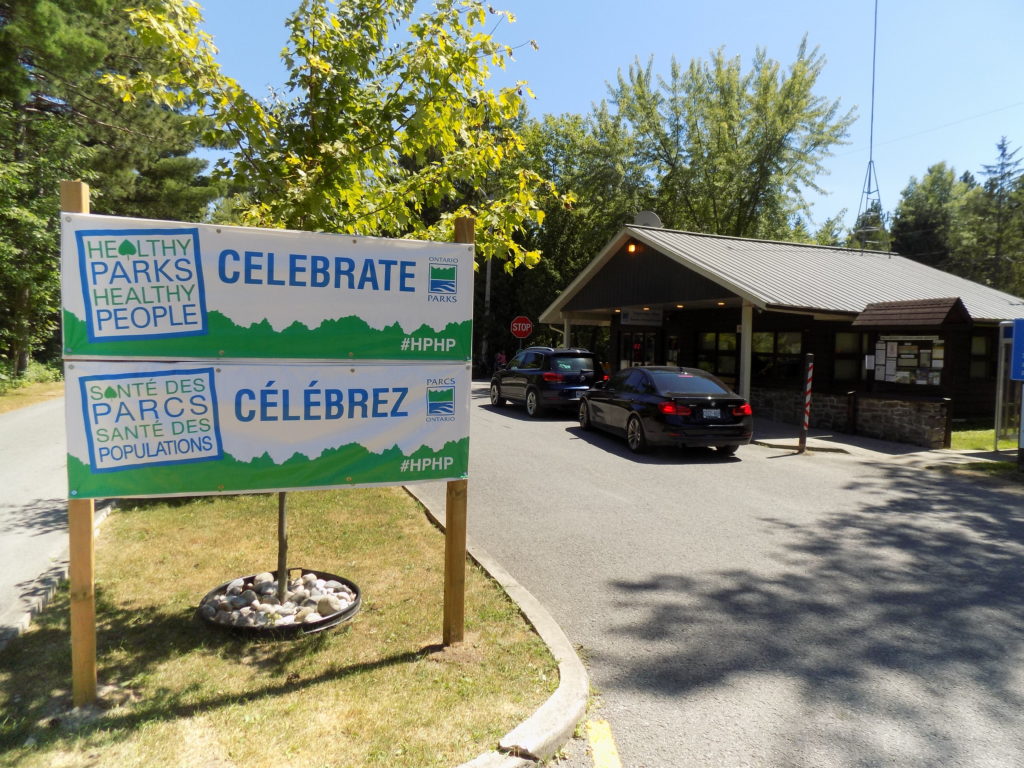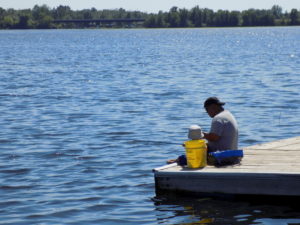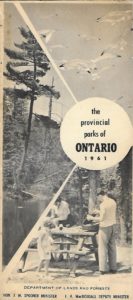125 years of Ontario provincial parks

Celebrating Healthy Parks, Healthy People and 125 years of Ontario provincial parks at Rideau River park near Kemptville. Photo: James Morgan
Happy Anniversary
Ontario is celebrating some of its most treasured outdoor places. It’s the 125thanniversary of the provincial park system. The first, and still most popular park, Algonquin, was established in 1893. There were only eight provincial parks until the 1950s, but the surge in demand for outdoor recreation, greater concern for environmental preservation, led to the provincial government establishing hundreds of parks over the past 65 years. There are now 340 provincial parks in Ontario, covering eight percent of the province’s land and water. The total amount of provincial parkland in Ontario is the same size as the entire province of Nova Scotia!
Some parks are small and offer just a place to have a picnic or break on a long road trip. Others are very remote and it’s possible to spend days or weeks in them experiencing the wilderness. Provincial parks show the diversity of Ontario’s nature and people. Possums live in parks like Rondeau on Lake Erie, and Polar Bear is the namesake of Ontario’s largest provincial park, located on Hudson Bay. Parks in the south were influenced by early logging and farming. In the far north, parklands were influenced by the indigenous people who were there long before anyone else arrived.

Scenes like this one at Rideau River are what has created many special memories for families in Ontario’s provincial parks. Photo: James Morgan
A lifelong love of parks
I’ll declare my bias right away. I’ve been an Ontario provincial park fan my whole life. It all started in the summer of 1979 at Presqu’ile Provincial Park on Lake Ontario. I’ve been to most of the parks in the southern portion of the province, and several in the sprawling northern part. The park system has been to my family, and to many others, a source of easy access to nature. The tradition has a human side though. There are millions of family memories and good friends made over decades of camping, hiking, and striking up conversations with campground neighbors or with folks along a trail.
People and parks
Most North Americans live in urban centers these days. We’re also all woefully inactive and often don’t see much of anything outside our daily lives of concrete, steel, and plastic. The Healthy Parks, Healthy People initiative is designed to get people outside to enjoy the outdoors for their own benefit. On July 20, day use at all provincial parks in Ontario was free as part of the initiative.
At Rideau River Provincial Park just off Highway 416 near Kemptville, the beach was busy, and families were enjoying picnics. Others were enjoying the water in canoes or fishing from the dock. The Ministry of Natural Resources and Forestry was demonstrating how it safely and ethically treats problem bears, of course no real bears could actually be used though. A Resource Management Technician explained how they first try to get a bear to leave a populated area by scaring it with loud noises. If that doesn’t work, they have to relocate them using baited live traps that can be towed as a trailer, or the bear has to be sedated using a tranquilizer dart gun.
Educational events in provincial parks like these bring back memories of others I’ve attended over the years. I remember watching slides, yes, real Kodak Kodachrome slides in a carousel projector about the gull habitat of Presqu’ile when I was about seven. 25 years ago, I slapped mosquitoes under a picnic shelter roof at Six Mile Lake Provincial Park while I watched a film—not video, called Places out of Time about the 100th anniversary of the parks system. About a week later, further north at Grundy Lake Provincial Park, a similar gathering viewed the hilarious 1974 film Crickets Make Me Nervous, a low-budget, government-produced piece about a hapless camper that was only made funnier because of its liberal amounts of polyester fashions, greasy hair, and 8-track tapes.

The cover of the 1961 Ontario provincial parks guidebook. James Morgan collection.
Enduring through policies and politics
Longtime Ontario provincial park visitors can be a fickle bunch. Like anything else under public control, the parks are subjected to the direction of government policy. Us park geeks lament that campsites and picnic areas at some parks were closed over the decades as an effort to save money, but we’re always happy when new parks are created, or facilities expand. We complain about the prices of campsites, cabins, and day use passes, but it’s still a good bargain compared to some of the alternatives. We complain about not enough rule enforcement, or too much. Sometimes the bathrooms are dirty, sometimes they’re cleaner than in many motels.
Until 1972, provincial parks were operated by the Department of Lands and Forests. It was replaced with the Ministry of Natural Resources that year. In 1996, Ontario, like most other governments, got caught up in the corporate branding trend and suddenly our parks were all branded as “Ontario Parks” with a single logo that began appearing on signage and maps. And since the election in June of this year, the provincial parks have been transferred to the new Ministry of the Environment, Conservation, and Parks. Government policy and operations aside, the provincial parks are not only places that conserve and preserve Ontario’s natural and human heritage, but they also are a unifying symbol of a big, diverse, and complex province that is often difficult to define.
Tags: Ontario, provincial parks





.jpg)


If you feel like sharing, which Ontario parks are your favourites, James? We are big fans of the larger northern parks such as Algonquin, Killarney, Lake Superior, Quetico and Woodland-Caribou.
Absolutely! It’s difficult to fit all of my favourites and experiences into one column. In the north, Killarney, Lake Superior, Neys, and Sleeping Giant are the favourites among the ones I’ve seen. In the so-called “near north” area, I like Samuel de Champlain, Grundy Lake, and Arrowhead. In the southeast, top grades go to Bonnechere, Charleston Lake, Murphys Point, Presqu’ile, and Ferris. My favourite southwestern parks are; Pinery, Point Farms, Inverhuron, MacGregor Point, and Awenda. Those are all “operating” parks.
DEC should use this model. The provincial parks are managed so much better than the parks in New York!
I’m surprised that Sandbanks Provincial Park on Lake Ontario was not mentioned? (south of Belleville in Prince Edward County). It is extremely popular (probably too much so nowadays) and quite beautiful. My family has been camping there for almost 50 years!